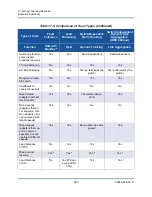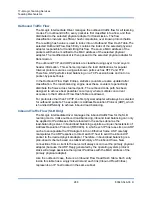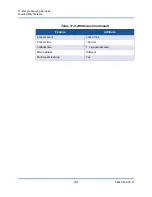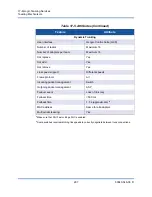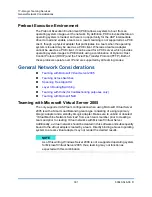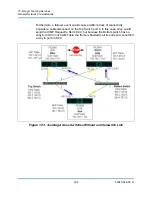
17–QLogic Teaming Services
Teaming Mechanisms
289
83840-546-00 D
When an inbound IP Datagram arrives, the appropriate Inbound Flow Head Entry
is located by hashing the source IP address of the IP Datagram. Two statistics
counters stored in the selected entry are also updated. These counters are used
in the same fashion as the outbound counters by the load-balancing engine
periodically to reassign the flows to the physical adapter.
On the inbound code path, the Inbound Flow Head Hash Table is also designed to
allow concurrent access. The link lists of Inbound Flow Entries are only
referenced in the event of processing ARP packets and the periodic load
balancing. There is no per packet reference to the Inbound Flow Entries. Even
though the link lists are not bounded; the overhead in processing each non-ARP
packet is always a constant. The processing of ARP packets, both inbound and
outbound, however, depends on the number of links inside the corresponding link
list.
On the inbound processing path, filtering is also employed to prevent broadcast
packets from looping back through the system from other physical adapters.
Protocol Support
ARP and IP/TCP/UDP flows are load balanced. If the packet is an IP protocol only,
such as ICMP or IGMP, then all data flowing to a particular IP address will go out
through the same physical adapter. If the packet uses TCP or UDP for the L4
protocol, then the port number is added to the hashing algorithm, so two separate
L4 flows can go out through two separate physical adapters to the same IP
address.
For example, assume the client has an IP address of 10.0.0.1. All IGMP and
ICMP traffic will go out the same physical adapter because only the IP address is
used for the hash. The flow would look something like this:
IGMP ------> PhysAdapter1 ------> 10.0.0.1
ICMP ------> PhysAdapter1 ------> 10.0.0.1
If the server also sends an TCP and UDP flow to the same 10.0.0.1 address, they
can be on the same physical adapter as IGMP and ICMP, or on completely
different physical adapters from ICMP and IGMP. The stream may look like this:
IGMP ------> PhysAdapter1 ------> 10.0.0.1
ICMP ------> PhysAdapter1 ------> 10.0.0.1
TCP---------> PhysAdapter1 ------> 10.0.0.1
UDP------> PhysAdatper1 ------> 10.0.0.1
Or the streams may look like this:
IGMP ------> PhysAdapter1 ------> 10.0.0.1
ICMP ------> PhysAdapter1 ------> 10.0.0.1
TCP------> PhysAdapter2 ------> 10.0.0.1
UDP------> PhysAdatper3 ------> 10.0.0.1
Summary of Contents for 8400 Series
Page 390: ......









